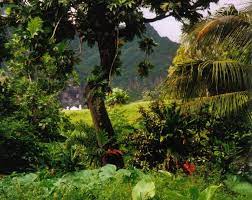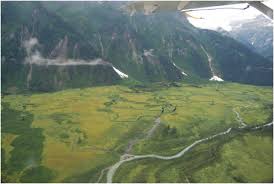Definitions, Concept and Types of Natural Resources
Everything humans use in their physical environment to meet their needs and wants come from natural resources supplied by the earth and sun. Since the 1980s there’s has been growing concern over resource availability and use, environmental consequences of resource exploitation and the relationship between the environment, poverty and economic change.
Natural resources is seen by many as plentiful and it is been exploited as cheaply as possible in quantities which did not acknowledge resource frontiers. Little thought was given to the amounts of minerals used or forest cleared or the capacity of the air land and water to absorb pollutants.
Using natural resources to meet society’s wants and needs requires wise management and stewardship of the resources. How wisely society develops the land and the impacts on natural resources will determine what is available in the future.
Definition and Concept of Natural Resources
A resource is a material or an ingredient required as life support system for living organisms on the earth’s surface. It is also considered as anything that can be used to satisfy the wants of man.
A resource can be viewed in terms of material e.g. raw material, land or in abstract terms e.g. Human Knowledge, attributes of labour.
In general, resources depend on importance attached to it. Resources are therefore man-made. They are created because someone wants something, a goal and hence means of achieving the goal.
Read Also : How to Reduce the Amount of Wastes Produced
If man does not make use of something, that thing is not a resource. A resource is therefore employed to meet certain defined objectives.
The attribute of labour is because someone wants to hire it. The attribute of land also is because it can be used for certain purposes and someone is willing to use it or take advantage of its fertility, topography, accessibility, scenery e. t. c.
Homo sapiens first appeared on earth nearly 200 thousand years ago. And since, then, we have depended on Mother Nature for things needed by us to survive. Humans require air, water, food from plants and animals, sunlight, minerals, land, soil and fossil fuels to exist. All these useful raw materials are called natural resources.
Natural resources are the raw materials supplied by the earth and its processes and include things in the physical environment used for housing, clothing, heating, cooling and transportation and to meet other human wants and needs.
For example, trees are used for shelter, animals for food and clothing, plants for medicine, minerals and fossil fuels for power, transportation, heating and cooling.
These resources include soil, air, water, sunshine, forests, wildlife, fish, fossil fuels, metals and minerals produced by the earth’s natural processes.
Using natural resources to meet human needs and wants has an impact on the global environment. Each time raw materials are used to produce goods there are ecological, social, and economic impacts.
Managing these natural resources and utilizing conservation techniques is necessary to help societies meet present and future needs. The primary economic value of a matured resource derives from the services it provides humans.
The value of resource hence depends on the context in which man takes it. For example, it is the context of forest estate, inland water fisheries, lakes, oceans, mineral resources in the country that really matters.
The context in which resources are taken also influenced by social, economic, and cultural backgrounds as well as technological know-how. Therefore, nothing is independent and nothing may be regarded as unmanageable in a vacuum.
The concept of a resource therefore varies in time and space due to technological advancement and human wants.
For example, the use of saw dust as cooking fuel was not appreciated in some part of the country until the scarcity of the conventional sources such as kerosene and cooking gas sequel to the industrial actions by the Petroleum and Natural Gas Workers.
After the Second World War, attentions focused on the subject of natural resources such as timber, fishes, petroleum, e. t. c. This is because they are important resources that constitute the basis of wealth and are indicators of the developmental potentials of a nation.
The unusually high rate of natural resources exploitation and misuse could result in irreversible disequilibrium of ecosystem and environment.
The picture below gives us a few examples of the numerous things we obtain from natural resources.

Types of Natural Resources
There are many ways of classifying these natural resources. They can be biotic or abiotic (that is derived from organic materials or inorganic materials).
Another way of classification of resources is by the amount of resource available for human consumption. Through this, resources can be classified into renewable (inexhaustible) and non-renewable (exhaustible) and natural resources.
Inexhaustible natural resources:
These are resources which have the inherent capacity to reappear, replenish or regenerate themselves by quick recycling, reproduction and replacement within a reasonable time and to maintain themselves.
Resources such as air, water, soil, forest, fishes, wildlife and sunlight are some examples of nature unlimited supply of inexhaustible resources also called renewable resources.
Exhaustible natural resources:
These are resources that do not have the capacity to regenerate or replace stock extracted from the earth and are finite resources.
Examples are fossil fuels (coal, petroleum, natural gas), metallic and non- metallic mineral (iron ore, gold, tin, limestone etc). These resources are also called non-renewable resources because they are not capable of regeneration
As human population is increasing at an astounding rate with world population estimates of 7.7 billion people (October, 2018), naturally, this means that we are utilizing more and more natural resources.
If we go at this rate, we will soon reach a day when nature will not be able to provide us with resources such as plants and trees, animals, mineral ores, fossil fuels such as coal, petroleum and natural gas. Thus, resources renewability becomes hampered.
If the use of these resources is not monitored carefully, there will be no food for our predecessors to eat, no energy for them to power their machines and no material for them to build shelter with.
Read Also: Methods of Disposal of Waste Pesticide Containers
This is why it is important to understand which resources are exhaustible and which are not, and to practice sustainable development. This is nothing but development that meets the needs of the present generations without compromising the ability of future generations to meet their own needs.
In conclusion, to ensure the continued existence of human life on earth, there must be rational use and consumption of natural resource by reducing the unsustainable use of natural resource which is essential requirement for human survival.



